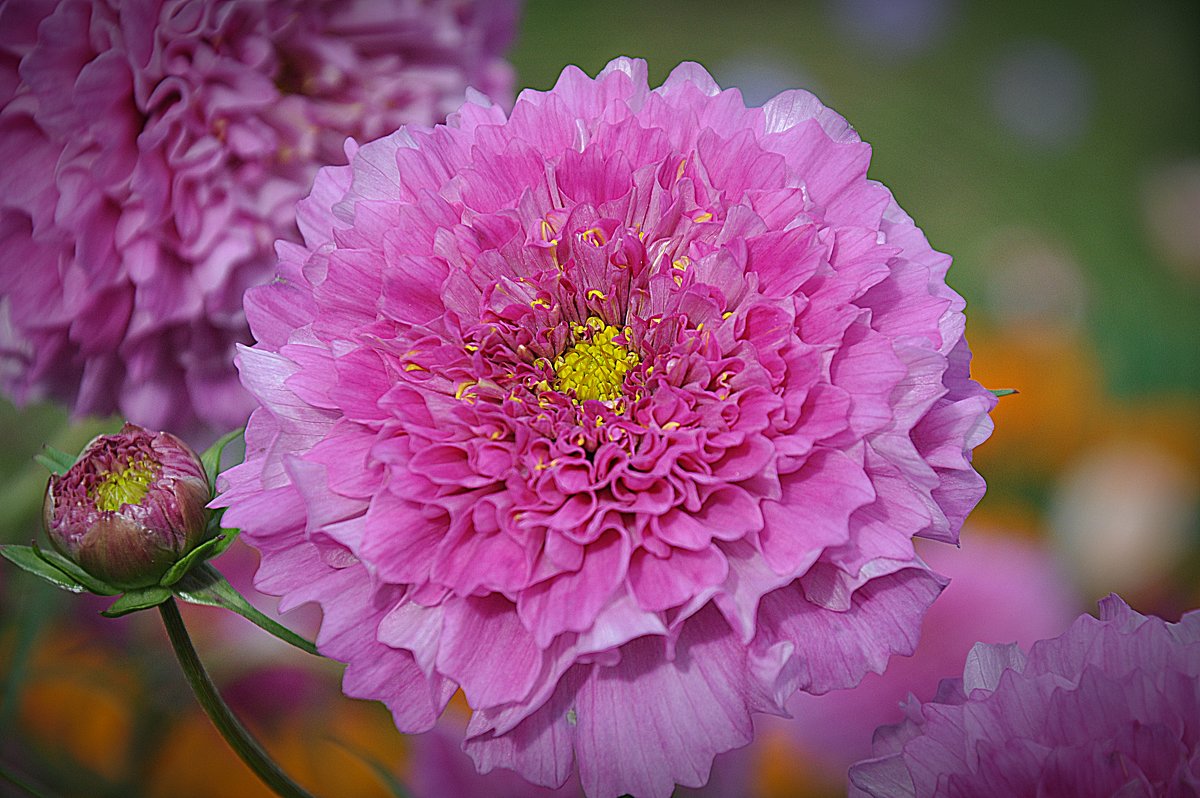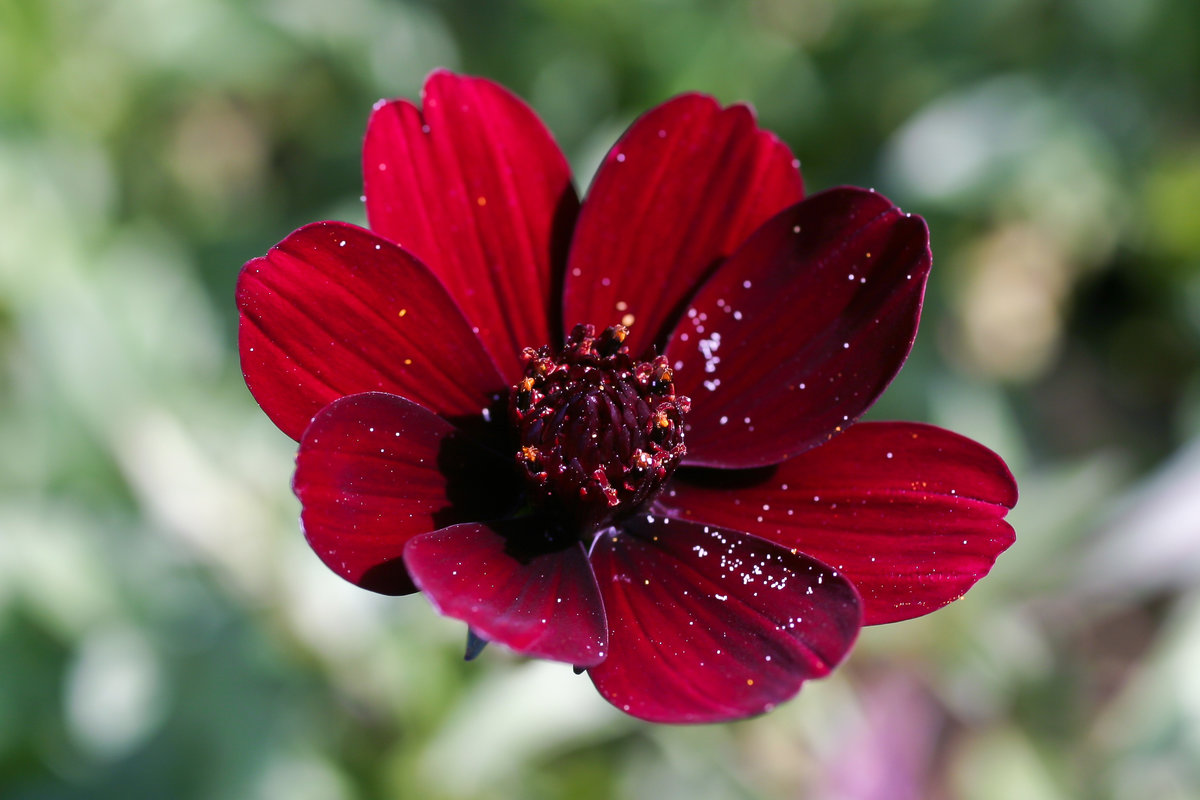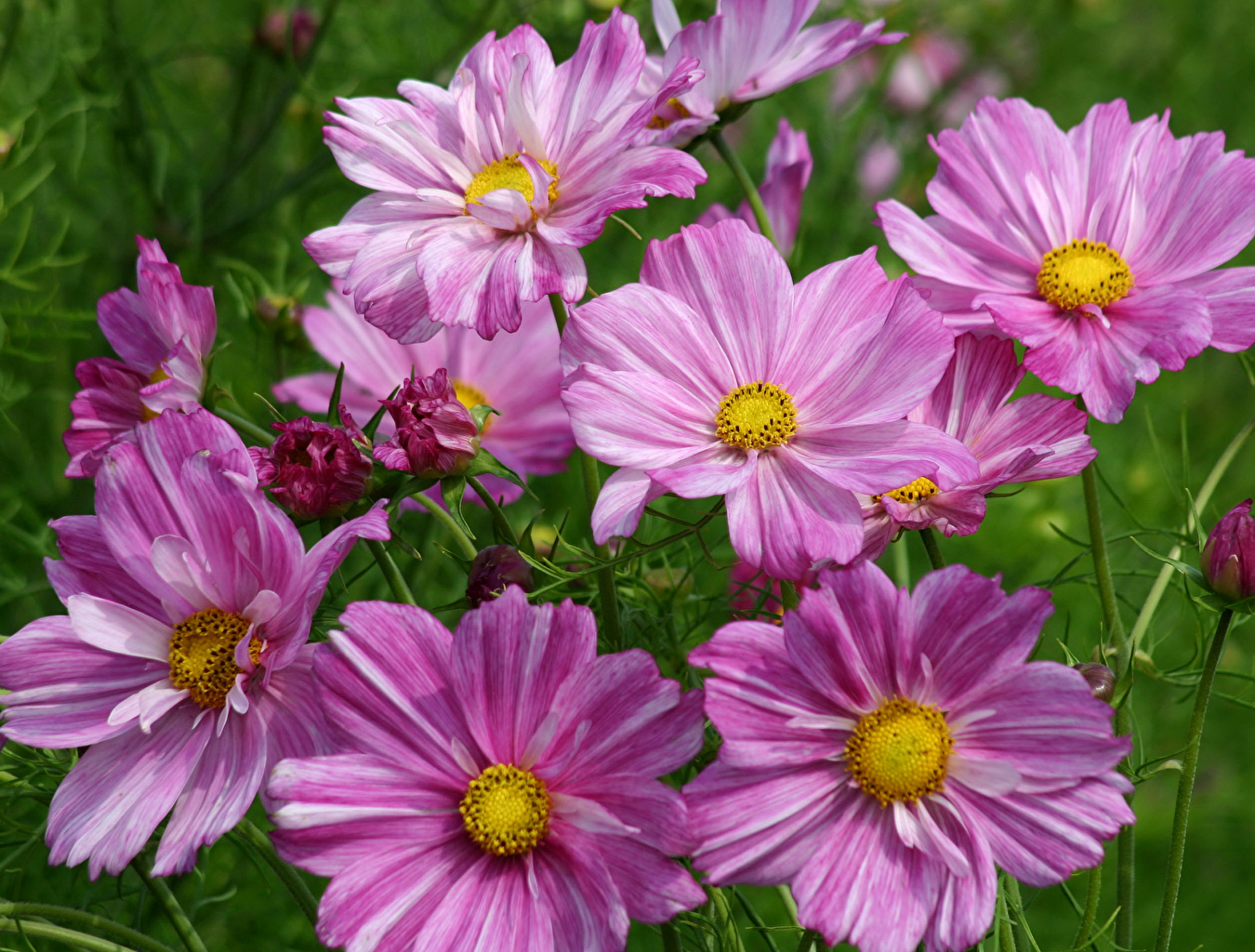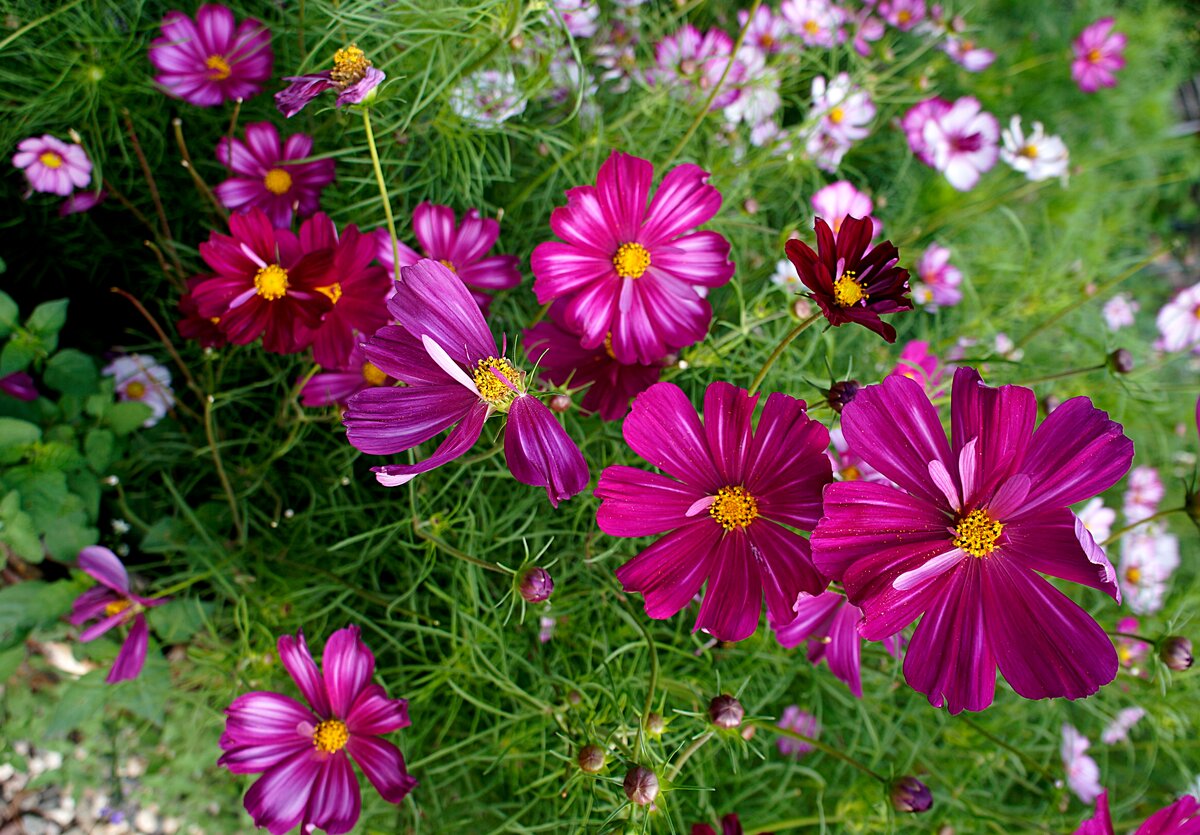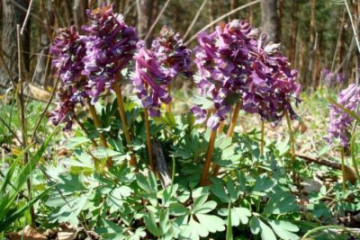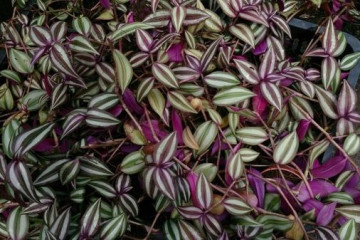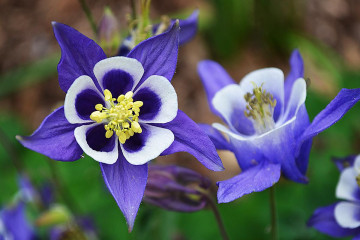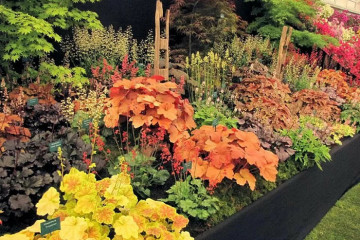Kosmeya flower
Content:
Kosmeya is a flower that is one of the brightest representatives of the Aster family, or Compositae. The culture is annual herbaceous or perennial. The plant is not capricious. Gardeners plant decorative types of cosmos, giving an elegant look to a flower bed or a green meadow, on which myriads of bright stars of flowers are scattered. Such a flower looks like space.
Kosmeya flower
Tropical and subtropical regions of Mexico, South America - the birthplace of the plant. No wonder she is called the Mexican aster, "beauty". The plant blooms magnificently with bright flowers, decorating the garden area. It is no coincidence that the Greek word "cosmeo", from which the name comes, is translated as "decoration".
The origin and appearance of cosme
The name of the flower is shrouded in mystery, as befits true beauties. Some growers associate it with decoration (Greek cosmeo), others - with space, because they find similarities with a dark sky, on which bright stars shine. In addition, the plant was called "disheveled lady". Fortunately, few people remember this offensive name.
The native of the tropics took root in the conditions of the Russian plain, although the local climate is far from suitable for all varieties of culture.
The green shoots of the plant are spreading, which is why some gardeners call it a shrub.
- It grows up to one and a half meters in height, although there are specimens no higher than 60 cm (depending on the variety).
- Narrow filiform leaves of a decorative type: openwork.
The plant blooms in early or mid-summer (depending on the weather) and pleases with flowering before frost.
Plant flower description
The cosmos has large paniculate inflorescences, from 6 to 12 cm in diameter. Tubular buds:
- pink and red;
- brown and crimson;
- blue and purple;
- purple and white.
Inflorescences are located at the tops of thin stems.
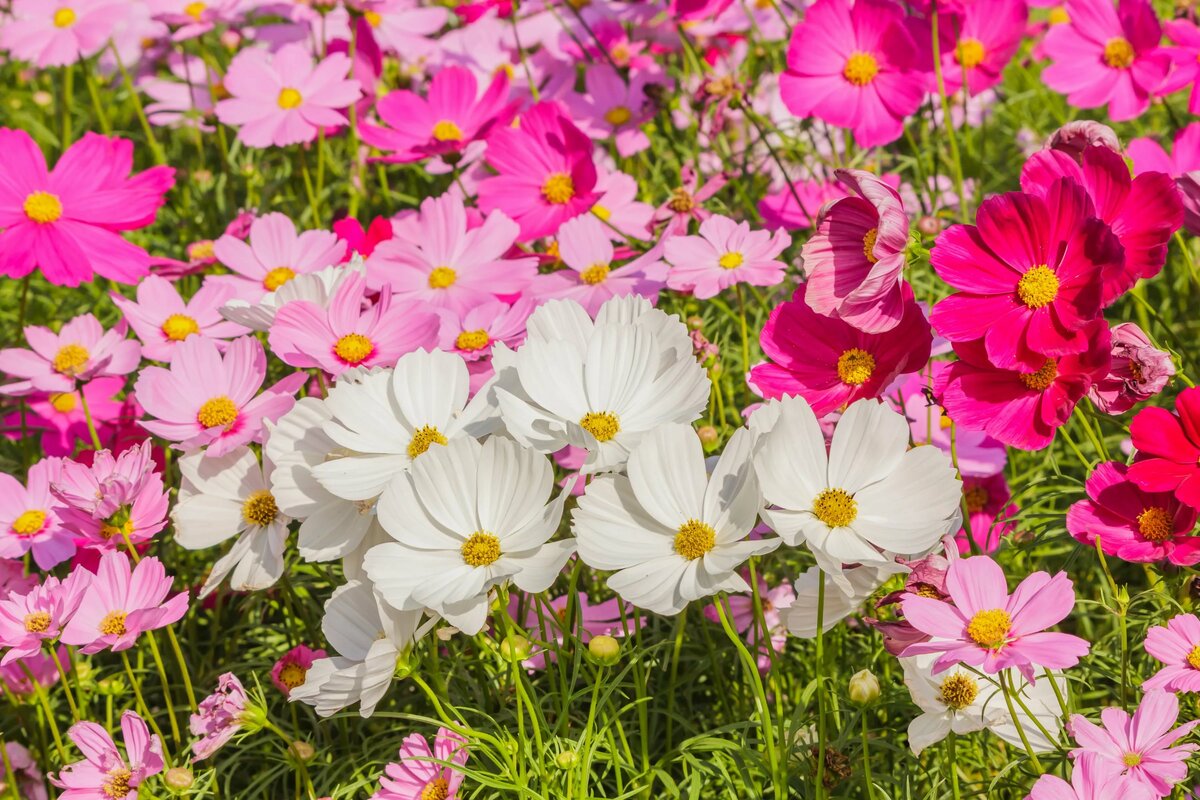
The flowers look like a large chamomile, which is why the plant is sometimes called Moscow chamomile.
Types and varieties
The culture has many different species and varieties: more than two dozen are known. Gardeners grow no more than 3 in the Russian climate.
Main varietal groups:
- terry;
- semi-double.
In addition, many decorative species of cosmos have been artificially bred by breeders.
Terry kosmeya
Florists consider the flower one of the most beautiful among other varieties. The tropical inhabitant has successfully adapted to the Russian climate.
The plant is tall, up to 1.6 m. It successfully tolerates severe winters.
The petals form several rows, which is why the inflorescences are lush, large.
There are many varieties of terry beauty:
- Snow click, Psyche - with white petals;
- Lollipop Pink, Seashell, Rose Bonbon - with pink ones;
- Iridescent overflows, Terry button, Carousel - two-tone white and pink.
Terry cosmos with orange, burgundy yellow flowers are known.
Kosmeya chocolate
The flower is a perennial. Resident of the Latin American tropics. The plant grows taller than 1.3 m. Russian flower growers fell in love with the luxurious flowers and pleasant smell.
There is an openwork border along the edges of the petals.An amazing feature of the plant is its chocolate-vanilla aroma.
The harsh winters of the Moscow region and the central regions of Russia may not endure the chocolate space.
In order for the chocolate beauty to bloom magnificently and delight with a luxurious look, the plant is planted in a bright place, since the shadow contributes to the growth of greenery.
Kosmeya perennial
Russian weather makes it possible to grow varieties of annual cosmos in a flower bed. Perennial species are planted mainly in the southern regions of the country, where there are long summers and not entirely cold winters.
The plant does not need too fertile soil, it does not need to be fed often.
Abundant watering and a lot of light for an elegant flowering are the main conditions for growing a flower.
Cosmeya double-feathered
It got its name because of the openwork leaves, stripped into many threads.
The plant can be more than one and a half meters in height, or it can remain short, not exceeding 0.5 m.
It begins to bloom in mid-summer and decorates the garden until the October frost.
Kosmeya sulfur-yellow
In Russia, the plant is cultivated as an annual. The flower is more thermophilic than the double-pinned cosmeya.
The color of the inflorescences depends on the variety, and the sulfur-yellow cosme has a lot of them. Weather conditions in most regions of Russia, not counting the southern regions, even in summer (cool, frequent rains) are not entirely favorable for growing sulfur-yellow cosmos. A native of the tropics, she prefers warmth and sun.
Cosmeya Sensation
The plant is a little over a meter high. Blooms in the middle of summer.
Lush openwork greenery is divided into thin stripes. The flower petals are pale pink, white, sometimes bicolor. Looks amazing: white strokes on red, as if applied by a corrector.
In Russia, it is cultivated as an annual, since the variety is thermophilic, it will not survive in the conditions of the Russian cold.
Kosmeya yellow
The plant with yellow flowers is most often grown as an annual. There are many varieties of cosmos with yellow petals. The color ranges from lemon yellow to deep orange:
- Krest Lemon variety - undersized flower with yellow petals in several rows;
- Sunny Gold - a plant with bright yellow double inflorescences;
- Bilbo is a low-growing variety with semi-double orange flowers on slender stems.
Growing cosmos from seeds
Growing a flower from seeds is not difficult at all. Seed material is planted directly into the ground or seedlings are grown. In central Russia and the Moscow region, it is advisable to plant seedlings, since the weather conditions are not suitable for growing cosmos as a perennial flower. Then the wonderful flowering will begin at the end of June.
Sunny places are chosen for landing. An important condition is that groundwater should not lie nearby.
Kosmeya double-pinned and sulfur-yellow are varieties that are most often bred by gardeners in suburban areas, decorating local areas or green lawns.
Kosmeya - growing from seeds: when to plant
The end of March or the beginning of April is the most suitable time for sowing seeds, which are purchased in the store or harvested on their own.
Planting material is harvested in late summer (late August - early September). Cosme seeds ripen in a pod similar to that of peas.
In the south of the country, they are sown in the spring directly into the ground.Pre-make holes, no deeper than 1.5 cm with an interval of up to 50 cm, into which 2-3 seeds are dipped.
Cultivation of a flower will not cause difficulties even for a beginner grower. Planted in open ground, Moscow chamomile will bloom not earlier than the end of July.
Growing seedlings
For seedlings, seeds are planted in containers or other containers, filling them with a nutritious soil mixture:
- The seeds are buried by 1-1.5 cm.
- Seedlings are grown at a temperature not higher than +18 ° C, but in a bright place. For this purpose, crops are taken out, for example, outside, in a cool greenhouse. At high temperatures, the seedlings will stretch and be weak.
- Seedlings germinate in 10-12 days. When the first leaves grow, the crops are cut, leaving a distance between them no more than 2.5 cm.
- After half a month, the seedlings are planted in separate pots.
Kosmeya: planting and care in the open field
The end of May or the beginning of June is the time for planting seedlings in a flower bed.
In the prepared holes with an interval of up to half a meter, seedlings are lowered, sometimes 2-3 per hole, in order to create a landscape composition or mixborder.
Taking care of a flower is not difficult. Since the plant easily tolerates dry times, watering is often unnecessary. Remove weeds and loosen to give plantings a neat look.
If the kosmeya is planted on fertile soil, then there is no need to feed it. It is advisable to add top dressing to depleted soil, but not more often than 2 times:
- nitrogen - before the formation of buds;
- potassium-phosphorus - before flowering.
From an excess of mineral dressings, the flowers will become small and not so beautiful.
High varieties are tied to supports so that they do not break from the wind or heavy rain. To add splendor, the tops are cut off and the faded flowers are cut off. The plant does not suffer at all from pruning, but grows to the sides, which makes it look bulkier, more magnificent and more elegant.
Kosmeya is an amazing flower. Due to the variety of varieties, ease of cultivation and care, gardeners like to plant the plant. In addition, the culture is resistant to diseases and harmful insects. Kosmeya will become a luxurious decoration of flower beds, lawns, recreation areas. The main thing is to choose a variety so as not to disturb the color scheme of the landscape composition.

